Hermine David
(1886-1970)
Artistic love matches are seldom made in heaven. French Artist Hermine David learned this truth, playing consort to Jules Pascin, an art maker and bon vivant, dubbed the “Prince of Montparnasse” for his colorful role in the bohemian café life of early 20th century Paris. David showed early promise as an artist and was already exhibiting her paintings in Paris salons by the age of 17, when she encountered the flamboyant Bulgarian Emigré Pascin in 1907, and her career and life took a predictable turn.
Once their tempestuous relationship began and David progressed from model-mistress to wife (in a civil ceremony in New York, where Pascin had gone to escape World War I), she lived in the shadow of her more famous partner, who insisted she paint only landscapes. Even when the couple returned to France after the war and went their separate ways, Pascin held David in thrall until his suicide in 1930. The balance has, now, been redressed. As interest grows in the works of women artists, David is the one these days with all the admirers.
After Pascin’s death, the artist found her way to religious faith, going on regular retreats to a Benedictine abbey in Dourgne, near the southern French city of Toulouse. A skilled graphic artist, David created numerous drypoint engravings on sacred subjects in the years that followed, working in a post-impressionist, Art Deco style, full of textured, sinuous line work, rich tonal variations, and naif, elongated forms, reminiscent of El Greco. A good example is The Adoration of the Shepherds, found in both monochrome and hand-colored versions in my collection.
David was particularly fond of imagery of the Virgin Mary and returned time and again to the Christmas story, showing the Madonna and Child, the Adoration of the Shepherds, and the coming of the Magi in different imaginative variations. She always depicts the Mother of Christ as a delicate-featured young woman of chaste beauty, presented in an ethereal sampling of blues--the color associated with the Virgin in Western sacred art--in her gouache study, the Blue Madonna.
The Easter Story is another prominent theme in David's works, especially images of the Resurrection, found in the image gallery in four different depictions: The Resurrection, Easter Sunday, Three Women at the Tomb, and The Pilgrims to Emmaus.
The prolific French artist was also skilled at miniature painting, particularly enamel works on copper, which she fired in her own oven. The Sacred Art Pilgrim Collection has four studies in this genre: Moses in the Bullrushes, Annunciation I, Annunciation II, and Ecce Homo, dating from around 1940, as well as a miniature hand-made Christmas card and small format watercolor of St. Francis in Prayer.
David is best known for her illustrations in over 70 literary works by Marcel Proust, Francois Mauriac, and other notable 20th century authors. She created 52 drypoint prints for a 1943 edition of Sagesse (Wisdom), a poetry collection by 19th century Symbolist Paul Verlaine. David’s lyrical compositions beautifully complement Verlaine’s confessional verse, which often takes the form of a dialogue with God, as he struggles to respond to “the terrible voice of Love.” In this inspired pairing, artist and poet are of one mind and heart.
The sampling of images in the gallery comes from the limited-edition of Sagesse and a separate suite of hand-tinted drypoints. I’ve provided titles for the four vertical prints, which served as frontispiece and dividers for the book’s three main sections. The horizontal prints are identified by the opening words of the poems they illustrate (along with the section and the number of the poem from the book ).
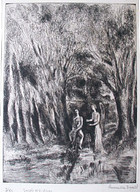
Jacob and the Angel
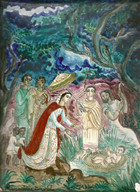
Moses in the Bulrushes
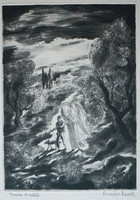
Tobias and the Angel
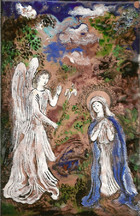
The Annunciation I

The Annunciation II
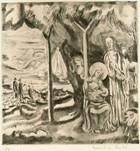
The Nativity (1941)
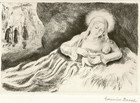
The Virgin & Child (1948)
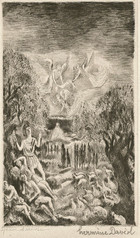
Announcement to the Shepherds (1957)
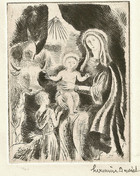
The Nativity (1949)
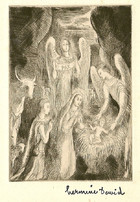
Nativity (1943)
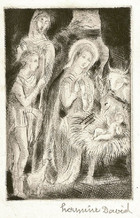
The Virgin and Child (1952)
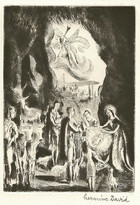
Adoration of the Shepherds (1949)
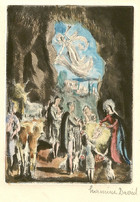
Adoration of the Shepherds (1949)
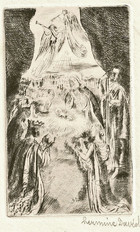
Epiphany (1947)
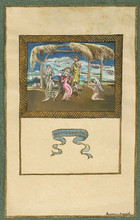
Hand-made Christmas card
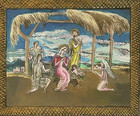
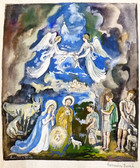
The Nativity
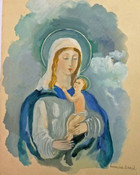
Blue Madonna
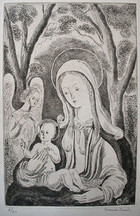
Madonna in the Woods
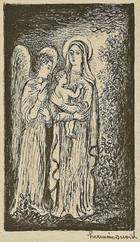
Madonna and Ministering Angel
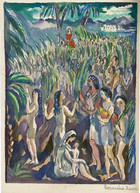
The Triumphal Entry
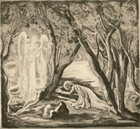
Christ in Gethsemane (1941)
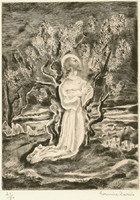
Christ in Gethemane II (1941)
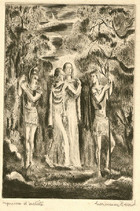
The Kiss of Judas (1943)
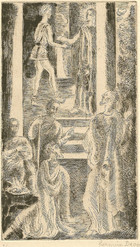
The Denial of Peter (1948)
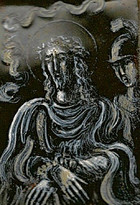
Ecce Homo
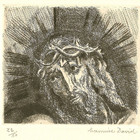
Head of Christ (1944)

The Resurrection (1944)
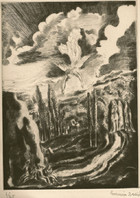
Easter Sunday (1939)
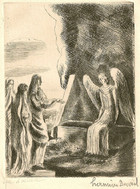
Three Women at the Tomb (1939)
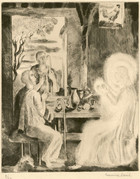
The Pilgrims to Emmaus (1941)
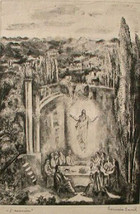
The Ascension (1944)
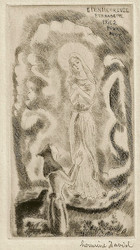
The Apparition at Lourdes
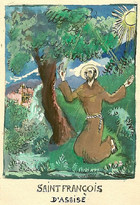
St. Francis of Assisi
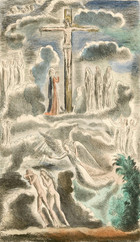
The Fall & Redemption
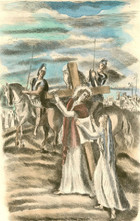
Veronica's Veil
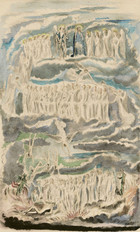
The Last Judgment
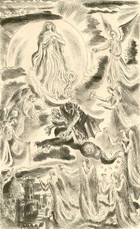
The Revelation
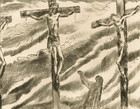
On n'offense que Dieu (1, XV)

L'ame antique (1, XXIV)
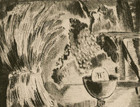
Mon Dieu m'a dit (2, IV)

Du fond du grabat (3, II)
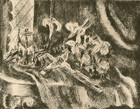
Parfums, couleurs (3, VIII)

